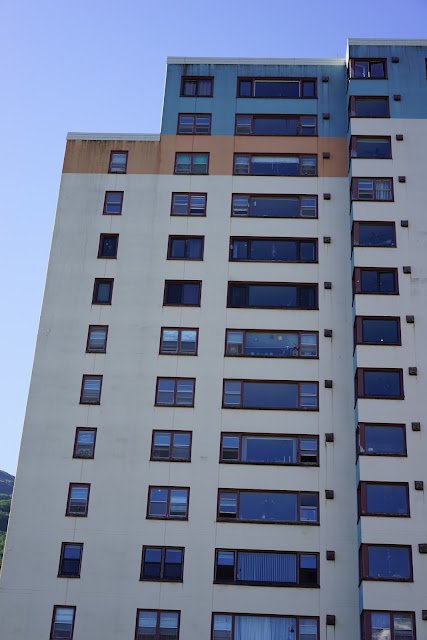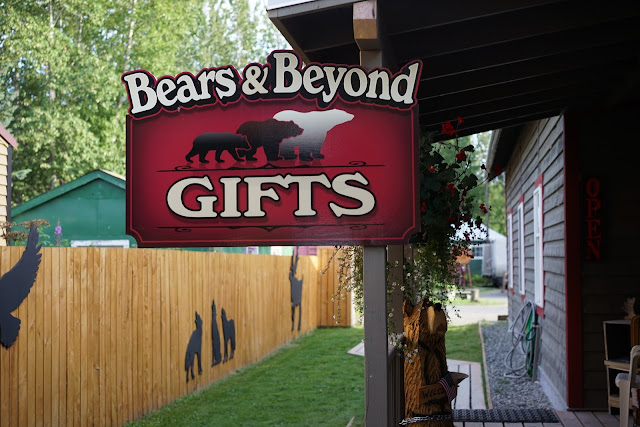I have never been to Paris. I would love to go. I will get there one day. I thought I was quasi apolitical, as my following of news is more closely linked to the scientific than the political. Prior to this morning, I could not have told you who the leader of France was (and maybe that's a little sad on my part).
In the stereotypes in my mind, Paris is a relaxed city, filled with culture, art, light, delightfully long springtimes, and a whole lot of wine and berets. People probably don't wear the berets, but that's what usually pops to mind. The images in my mind are formed by the stories of others...pictures, movies, books. There has been a common theme though -- Paris has been romanticized for decades...yes for the romance between people, but what I really mean is that the city has been romanticized globally. We expect it to be beautiful, idyllic, and under the eternal warms of spring days and summer nights. We expect wonderful things to happen there. Because it's PARIS.
I have seen some posts on social media asking why are suicide bombs in Paris receiving more media attention than suicide bombings in other places at other times this year. I can't believe anyone wants to compare scorecards at a time like this, but OK, let's talk about it. News reports say that 153 people were killed in Paris last night. If the claim by a terrorist cell that I won't even speak the name of is true and that jet was brought down by a bomb, that's 224 people killed Oct 31st. 102 people died October 10th in the suicide bombings in Ankara, Turkey. September 20th saw 145 die in Maiduguri, Nigeria in bombings. July 17th saw "100+" killed in Khan Bani Saad, Iraq in suicide car bombings. July 1st and 2nd saw a horrible shooting rampage killing 145 in Kukawa, Nigeria. On June 25th, 145 were killed in Kobani, Syria with detonated car bombs. 147 were killed on the University campuse in Garissa, Kenya on April 1st. On March 20th, 137 were killed by 5 bombs in Sana'a, Yemen. And possibly the largest loss of life at all, in the Borneo State of Nigeria, a massacre occurred between January 3rd and 7th. At least 100 bodies were found, 2000 people were unaccounted for and feared dead. That's just 2015, and those are just the ones with 100 or more fatalities. That doesn't include other well publicized terror attacks in 2015 in the Phillipines, in France, in the Ukraine, Pakistan, Saudi Arabia, and Cameroon which had large losses of life, or the starling almost daily record of 1-20 deaths globally. Some places-- Iraq, Nigeria, Israel, Jerusalum, and Cameroon seem to be hit with more frequent event, including hate crimes, where a single person or is attacked for being of a certain religion. We could blame the media for not giving equal attention to every life. But the media is just being the media. When we want to educate, and cultivate thought, we turn to school and Universities, the education system. Let's not confuse media with education. Media is a method of spreading information that catches the interest of people. Not necessarily useful information. Not the most important information. Maybe not even the information people really want (seriously, who would have thought I would know who Caitlyn Jenner was before I could name the President of France. Believe me, that wasn't in the order of things I was interested in). And let's not confuse what's on the news with what people care about. But what happened in France does catch my attention. Not because France is more important, or because of the color of anyone's skin, or anyone's religion. It catches my attention more because Paris is in my mind as a city of love, culture, and peace. It catches my attention because it is not a place that has reported this type of mass casualty before in my lifetime. It catches my attention because it means the global efforts to stop racism, war, and persecution from others is not diminishing but growing. Spreading. Every life matters. In every place. And the overall losses are global events in 2015 are staggering, and difficult to comprehend.
So while I hate knowing that there has been so much senseless intentional death inflicted in so many places, today the blood is fresh on the streets of Paris, and so my current thoughts are to those who have just lost their lives, their families and friends; my heart goes out to them, whoever they are, whatever their race, faith, nationality, or religion. I don't know yet who the victims were, but I expect they will represent the diversity of a modern nation with many races, many faiths, many histories.
Paris has not always been a peaceful place. Paris has not always been idyllic. A review of the history of Paris is quite interesting. Origins of human habitation have been documented as far back as the neolithic, 9800 years B.C. Paleontology knows the site of Paris had neolithic, likely agriculture based settlers that time. As far as recorded
written history goes, we only know about Paris from about 250 BC. Those Parisians were actually a Celtic tribe known as the Parisii, and the settlement was known by as Ile de la Cite. They built a bridge across the Seine, which opened trade routes and made them wealthy from the bridge tolls. The Greeks wrote of the city as Lucotocia, the Romans wrote of it as Leucotecia. Julius Caesar came with war in 52BC, and the Romans took over, and rebuilt on a slightly higher bank and called the city Lutetia. There was of course, a couple hundred years of crisis and violence between Christianity and the Romans, and then the Germanic Invasions began around 275 AD. The residents built a walled city, and by 305 the city was no longer recognized as Lutetia, but simply, the City of the Parisii, or Paris. Interesting side fact: in 360 AD, a nephew of Constantine named Julian lived in Paris and was declared Emporer, briefly making Paris the capital of the Western Roman Empire. But that was short lived because Julian died in 363 fighting the Persians. War again for Parisians. War war war. Then there were the Barbarian hoards, which finished off the Roman Empire. In 451 Parisians prepared to defend against Attila the Hun, but he passed them by and attacked Orleans. In 461 it was the Franks. In 508, Clovis of the Franks make Paris his capital. Paris was kind of peaceful for a couple hundred years, and it physically and spiritually grew. Violence arrived again in 885 with the Vikings, but the Parisians held them off for over 4 years, and entered into another period of peace. The population doubled, Notre Dame was built, Universities were built, and Kings built palaces and fortresses, bridges and stone roads were built, commerce, economy, and architecture blossomed. But then the Bubonic Plague hit Paris in 1347. At least 50,000 died that year, and before it ran its course, 20,000,000 would die in Europe, 1/3 of the population of the continent of Europe. Now add to that a fact that France and England were at war in this time (remember the 100 Years of War, Joan of Arc, and all that). Paris actually lost 2/3 of its population to the plague and war between about 1345 and 1445. Paris was a city of death, war, and hardship for about another 150 years. Things got back on track around 1500, but in 1590 the city was under siege in another religious war and 50,000 citizens starved to death before the conflict ended. Paris did well in the 1600's and 1700's, but social disparity grew along with the wealth, science, and culture in the age of enlightenment. War was back in 1789 with the French Revolution, and part of this period was known as the Reign of Terror -- murder, riots, and destruction were rampant between 1792-1799. Louis XVI and Marie Antoinette had their heads lopped off to a live audience in the public square, mass imprisonments and murders of both convicts and socialtes occurred, the cathedral of Notre Dame even had ITS spire lopped off a one point. When the terror stopped who took the reins? A man known as Napolean (the first one). He got Paris into a bit of a pickle, and in 1814 400,000 coalition forces from Russia, Austria, Prussia, and England brought war to Paris. Paris surrended within 1 day (its entire population, man, woman, and child was only 650,000). A time of peace came again, and with it came growth. There were more setbacks...cholera claimed 20,000 lives in 1832. People fought for freedom of speech, more control, better social ammenities. Riots in the city were regular in the 1830's. Democracy arrived in 1848. They elected Louis Napolean Bonaparte (the 3rd Napolean). And that Napolean declared war on Prussia in 1870 (again), and they were beseiged (again), and the city of Paris plunged into starvation (again). This led to a civil revolt where a group called the Commune took over, and before the army got control back a month later, 865 died, thousands were injured. So France arrested about 45,000 people, and sent a great deal of them to foreign penal colonies. And then for another 135 years, there was calm. World War I. Parisians did their best in that war -- in one notable battle Paris taxicabs drove the troops to the front lines because the country had no other way to get them there. Paris was bombed by the Germans, and at the end of the war lost thousands to measles, typoid fever, and the influenza pandemic. In World War 2, France was occupied by Germany from 1940-1944. Single bombings claimed as many as 650 people in a single night. 12,844 French Jewish citizens were sent to Auschwitz. After the war, finally, once again, a period of calm ensued.
As horrific as it is today, and as horrific as it was to the people in each on of the many historical events listed above, Paris has not been the city of peace it is to my generation. It has had more than it's share of violence and tragedy. It has experienced war, genocide, political persecutions, religious persecutions, and religious wars. France fought similar battles that are today being fought in Syria, Iraq, Cameroon, Nigeria; just in a different time and with different tools. France has attacked and been attacked from its neighbours, it has fought for and against its citizens, their faiths, their economic situations. And after each conflict...it got a little better. And in my lifetime, it has been in another period of peace and growth. This attack against the ideals of a country who has been there, done that, and found a better way to live is disheartening. But, history repeats itself. Paris will survive this too. And it may take a while, but Paris will grow better. And you know what? Other cities can say the same thing. Because the history of Paris is a story shared by all old cities in the history of civilization. The bad guys will win some battles, but eventually, they too will fade into history like many other violent invaders throughout history. Why? Because statistically they are a much smaller faction of the human race. They are outnumbered in this would by loving hearts, minds wired to build rather than destroy, and peaceful souls. Time is the greatest ally of civilization and peace, and Time cannot be defeated.
Stand strong Paris.






















































